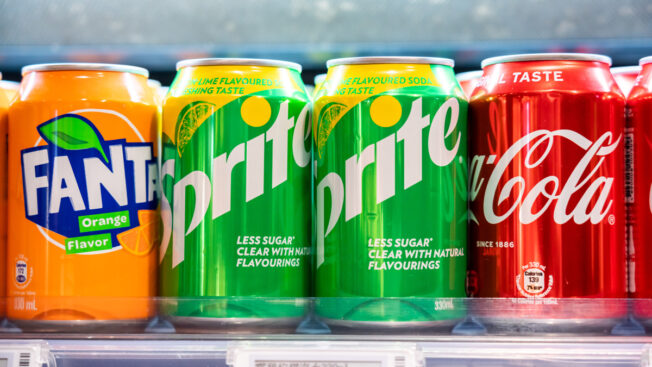CANNES, France—Sprite has been named Kantar’s Most Resilient Brand based on Kantar’s Worldpanel, which analyzed the shopping behavior of more than 1 million global households over the past year and the performance of 37,000 global consumer packaged goods brands.
The ranking was built on the brands that recruited the greatest number of new shoppers.
Sprite’s rebrand last year included a new visual identity. And, in a nod to the environment, it is no longer producing its classic green bottle.
The consumer strength of a brand in good economic times would make most marketers proud. But it’s in challenging times that a brand’s loyalty is really tested, when shoppers might opt for similar but less expensive products.
Brands face a growth challenge
The top 10 most resilient brands in 2023:
- Sprite (+2.3% penetration growth)
- Sunsilk (+2.2%)
- Nescafé (+1.8%)
- Lay’s (+1.6%)
- Oreo (+1.6%)
- Dove (+1.3%)
- Head & Shoulders (+1.3%)
- Coca-Cola (+1.2%)
- Lux (+1.2)
- Ariel (1.2%)
Both Sprite and Sunsilk were found to have attracted more than 30 million new shoppers between 2021 and 2022.
“Surpassing 30 million new shoppers in a year is an impressive feat and speaks volumes about the resilience of our top two brands,” commented Guillaume Bacuvier, chief executive of Kantar Worldpanel.
“These two household names have taken different routes to success, with Sprite focusing on a new global platform which encourages shoppers to choose the brand more often and Sunsilk investing in targeted innovation which meets consumers’ specific needs in particular markets,” added Bacuvier.


In a year that has seen high inflation with food prices soaring, not least due to Russia’s invasion of Ukraine, people have turned to cheaper alternatives, which has led Kantar to record the highest purchase rate of private-label brands.
With research spanning 57 countries, Kantar sees growth in competition for brands as shoppers mitigate inflation.
According to Kantar Worldpanel, the current rate of private-label purchasing is around 30% but will grow to 40% over the next six years in Europe’s biggest markets.
“They’re [consumers] either buying less or buying cheaper or in cheaper outlets. These are the ways people find to cope with inflation,” explained Virginia Garavaglia, global head of marketing for Kantar Worldpanel, adding that this rise will make it more difficult for brands to grow sales.
“It’s not only the more vulnerable or the lower incomes; everyone, even the highest spenders in FMCG, are choosing to buy less and buy cheaper,” continued Garavaglia.
Innovation driving growth
The research highlighted that many of the brands featured this year had introduced new innovations.
In Spite’s case, in addition to the recent brand refresh, it has also introduced Sprite Lemon+ Zero Sugar. Sunsilk relaunched its Seda Boom range for frizzy hair in Brazil using more than 50 content creators through TikTok, adding 32 million shoppers for the brand in 12 months.
Meanwhile, L’Oréal haircare brand Elvive at No. 30 launched Hydra-Hyaluronic variants that offer extended hydration for up to 72 hours, boosting its shopper base by 21%.
The Big Five markets (India, China, U.S., Brazil and Indonesia) are core defensive markets for brands even as they expand into new territories. Fanta (15), Pepsi (18), and Sprite (1) are seeing successful growth across a broad range of territories, Kantar found.









